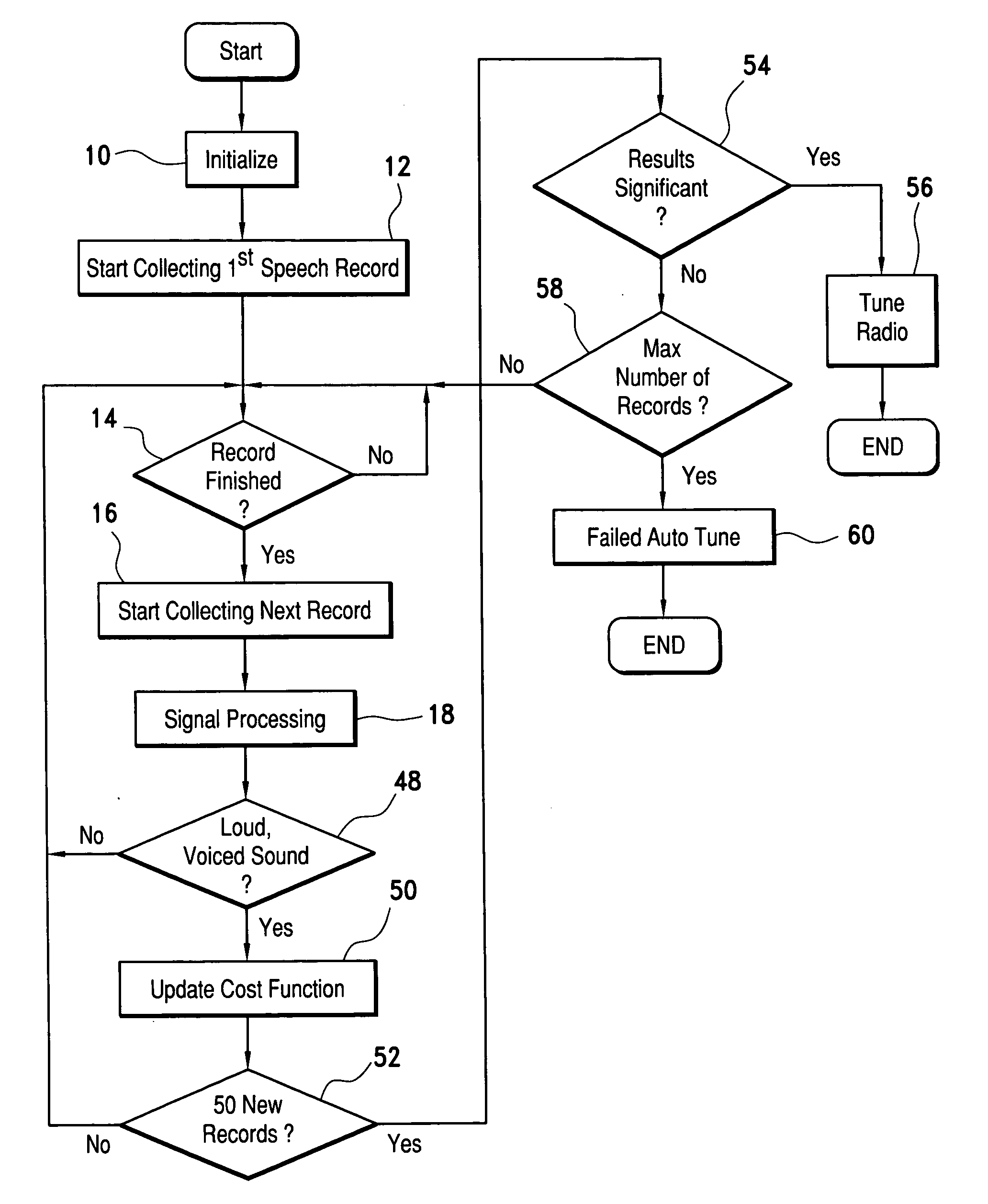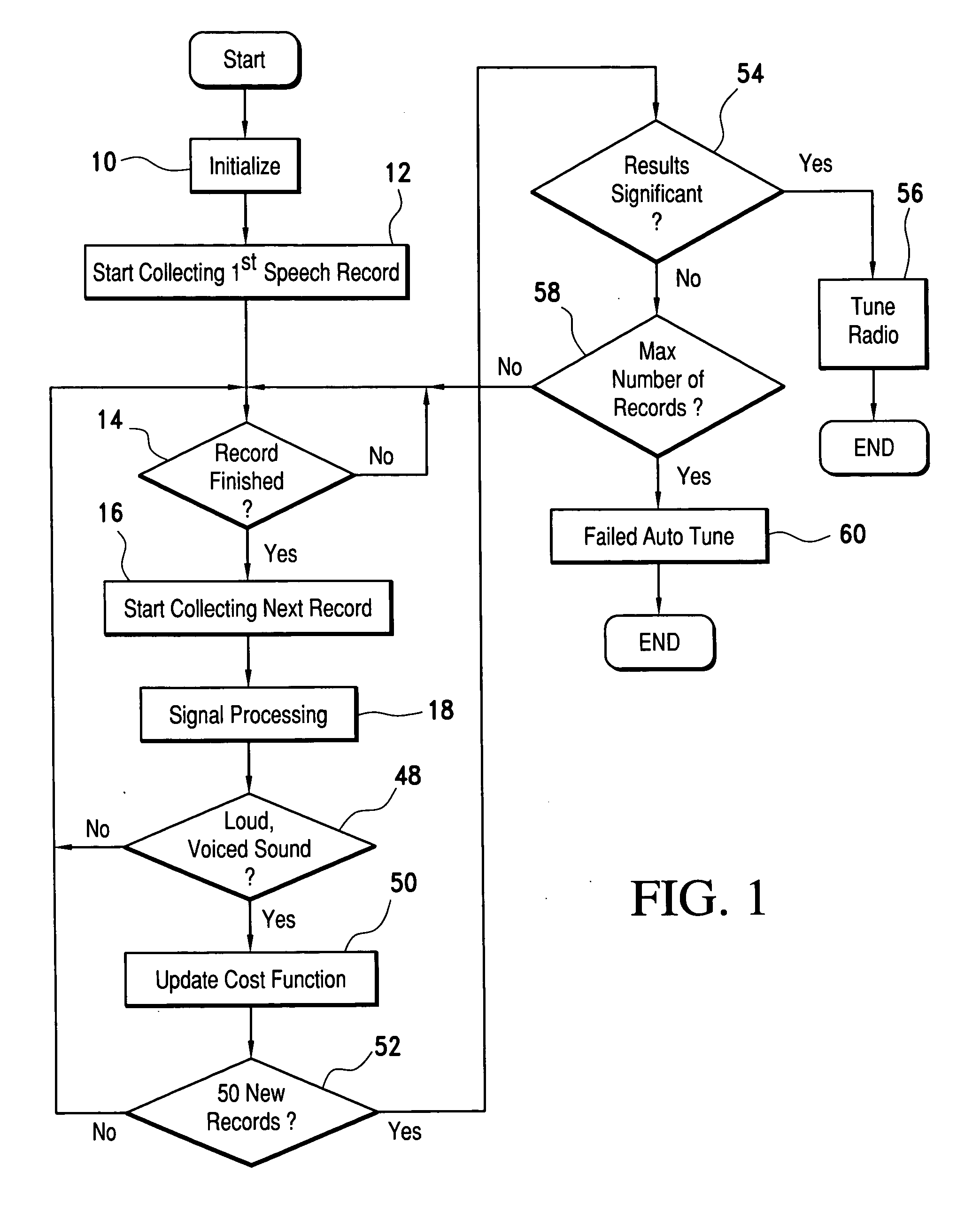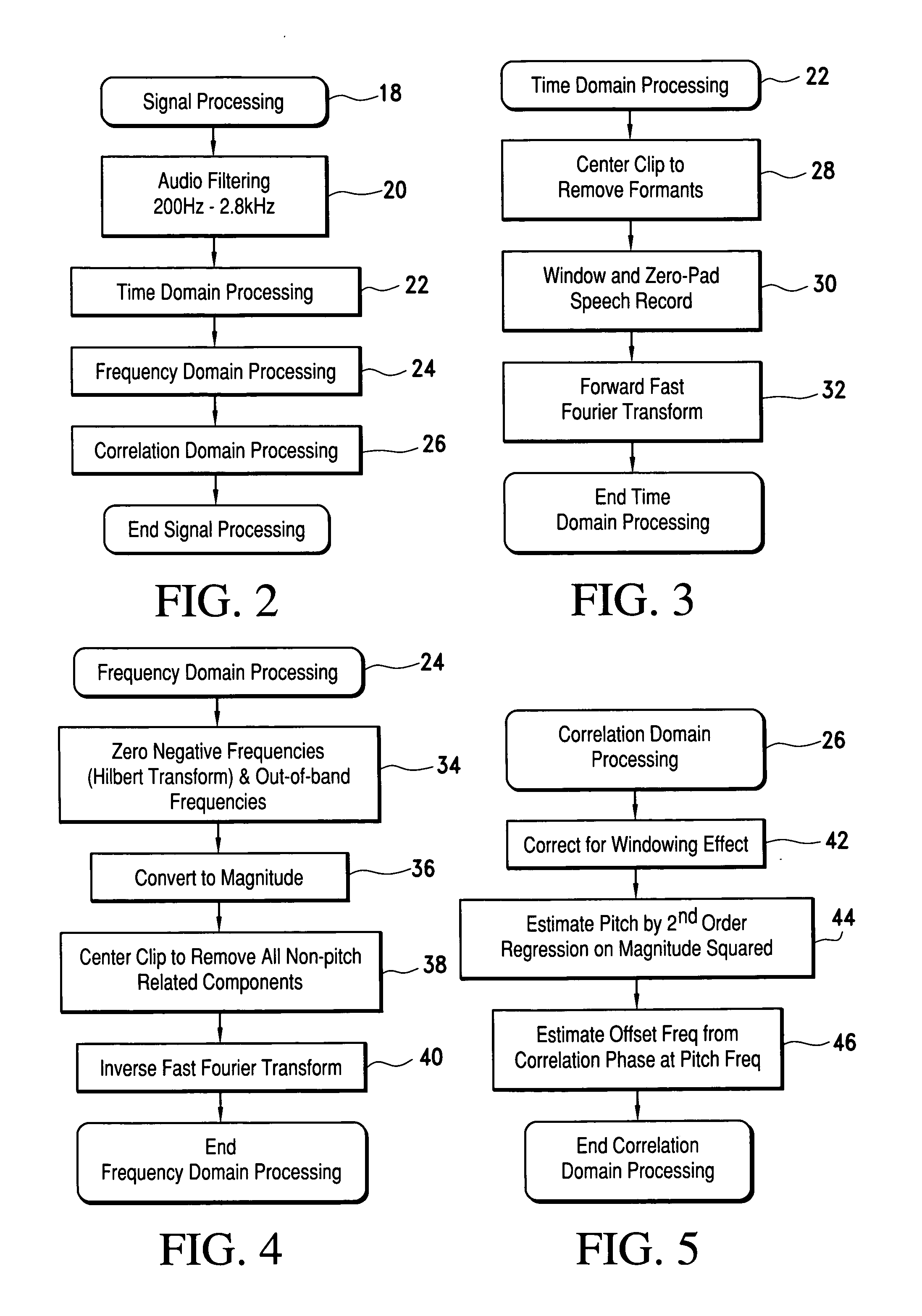Single sideband voice signal tuning method
- Summary
- Abstract
- Description
- Claims
- Application Information
AI Technical Summary
Benefits of technology
Problems solved by technology
Method used
Image
Examples
Embodiment Construction
[0031]Referring to the accompanying drawings wherein like reference numerals refer to the same or similar elements, a flow chart of a general embodiment of a method for tuning a receiver or radio in accordance with the invention is shown in FIG. 1. At the beginning of the method, in step 10, the system is initialized to tune the receiver or radio and a first speech record is collected (step 12). A determination is made as to whether the speech record is finished, i.e., complete (step 14). As soon as the speech record is finished, collection of a subsequent speech record is immediately started (step 16) and signal processing begins on the finished speech record (step 18).
[0032]A preferred embodiment of use of this invention is within a SSB radio. However, it is to be understood that other implementations including Personal Computers, PDA's and custom external hardware fall within the scope of this invention.
[0033]It is further understood that the scope of this invention includes oper...
PUM
 Login to View More
Login to View More Abstract
Description
Claims
Application Information
 Login to View More
Login to View More - R&D
- Intellectual Property
- Life Sciences
- Materials
- Tech Scout
- Unparalleled Data Quality
- Higher Quality Content
- 60% Fewer Hallucinations
Browse by: Latest US Patents, China's latest patents, Technical Efficacy Thesaurus, Application Domain, Technology Topic, Popular Technical Reports.
© 2025 PatSnap. All rights reserved.Legal|Privacy policy|Modern Slavery Act Transparency Statement|Sitemap|About US| Contact US: help@patsnap.com



